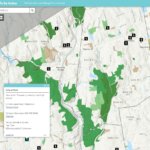The State of Connecticut has requested, and the U.S. Census Bureau has proposed the addition of Connecticut’s Planning Regions to its list of geographic units that are treated as county equivalents for statistical purposes. This will align Census Bureau tabulations with the nine Planning Regions established and used by the State of Connecticut for the Regional Councils of Governments (COGs). The State’s eight counties ceased to function as governmental and administrative entities in 1960.
The proposal will put Connecticut on a level playing field with other states by:
- Aligning data released by the Census Bureau with the Planning Regions used by the state rather than with defunct, historical geographies. This will improve the ability to use census data for planning and decision-making.
- Allowing more entities in Connecticut to apply for competitive federal grants. Often federal grant programs are designed for and around counties. The lack of regional geographies recognized as county-equivalents by the Census Bureau makes cities and towns in Connecticut ineligible to apply for many federal grants that are limited to counties. Planning Region county equivalency will allow municipalities to more easily collaborate on federal grants submitted through their COGs, eliminating redundant grant administration and potentially leading to more competitive applications.
This has no effect on the current standing of counties and the home-rule of local government in Connecticut. More information on county equivalency can be found in:
Connecticut Office of Policy and Management (OPM) Press Release
OPM County Equilvalency Story Map
Federal Register (includes a link to submit public comments)
The Federal Register 60-day comment period will run to February 12, 2021. The expectation is that, following the public comment period, the proposal would be adopted and go into effect for all official Census Bureau statistical and geospatial data products starting in 2023.


